The two feedstocks we are looking into this time are Evening-Primrose Oil and Fish Oil. Here is a link to the main page of feedstocks we have examined so far. As we continue our deeper look into different types of feedstock that Renewable Energy Group (REG) studied in 2009 in the Feedstock and Biodiesel Characteristics Report.
Evening-Primrose Oil
The Common Evening-primrose (Oenothera biennis) is also known as evening star, sun drop, German rampion, weedy evening primrose, hog weed, King’s cure-all, or fever-plant. This plant is native to North America and grows throughout most of the continental US and in Canada. 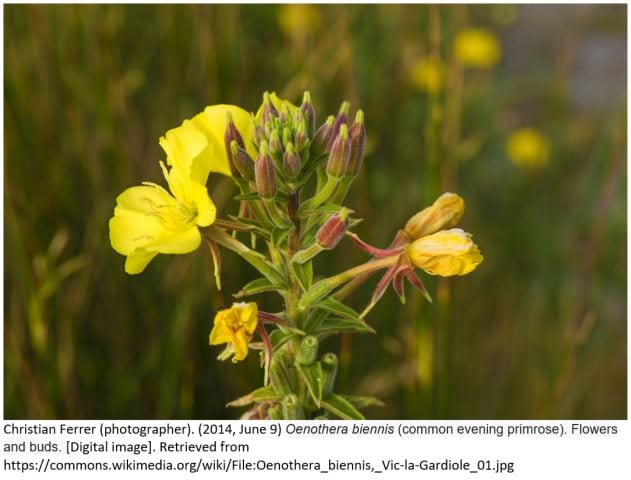
A unique aspect of this plant is that it has a bright yellow flower blooms that is open in the evening and then is closed at noon.(source) This plant can grow up to 6 feet tall and is a biennial, meaning it lives for 2 years flowering the second year. The plant has leafy branched stems that are ridged and usually has fine white hair.
According to Friends of the wild flower:
“The leaves are both basal and stem. Basal leaves taper to short stalks and form a rosette in the first year of growth. The stem leaves develop the second year when the flowering stem rises; they are alternate, lance-like, wavy edged, slightly toothed, slightly hairy on both surfaces, with one main central vein and fine laterals. They can be up to 8 inches long near the base and 1/4 as wide, but become considerable shorter near the top of the stem.”
A simple google search shows that this plant has medicinal uses, known by some of the indigenous tribes of North America for hundreds of years. Some of the common uses were to treat bruises with a poultice and use the leaves in a tea as a stimulant. The drug in the plant can be used as a sedative and and as an astringent. The oil the plant produces is full of fatty acids and is sold as a dietary supplement.
The roots of the plant can also be boiled and eaten if they haven’t flowered yet. The leaves of the plant can be used before flowering in salads. Even the flowers can be eaten and are said to have a sweet taste.
The ability of the plant to grow in arid conditions and not need a lot of water adds potential of this plant to provide nutrients, oil and medicinal material for drier locations.
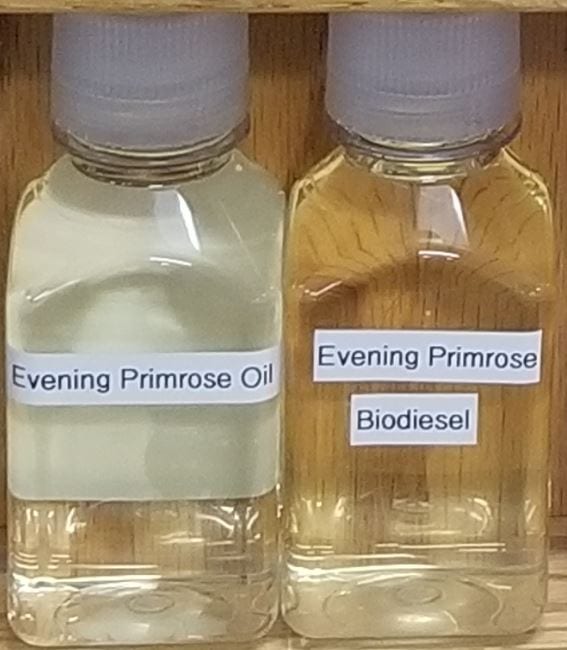
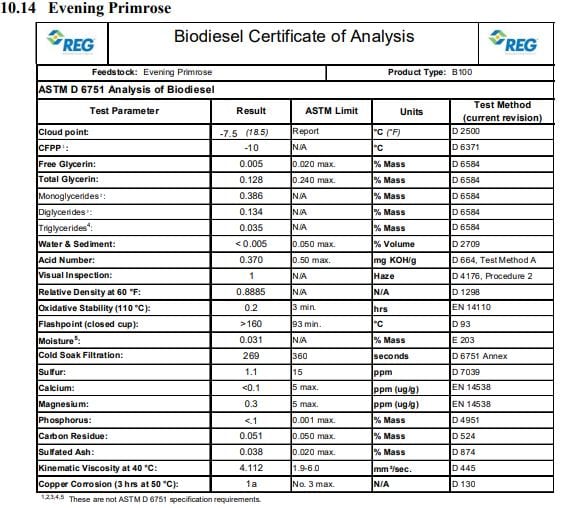
Fish Oil
The Fish Oil that REG used simply says “Fish oil was obtained from a commercially available source in Peru.” The types of fish that are used to make fish oil in Peru are anchovy, herring, menhaden or sardines.
This source was likely the same that would be purchased to produce fish oil nutritional supplements or other food products. In the production of biodiesel there is a large potential for this product. Many of the toxins and imperfections that need to come out for human consumption wouldn’t effect the creation of biodiesel. Fish oil that is produced in the process of fish processing has potential of removing waste from going to landfills. Several scholarly papers have been written on it. If you would like to know a little more this article was written on the waste from salmon processing in Canada.
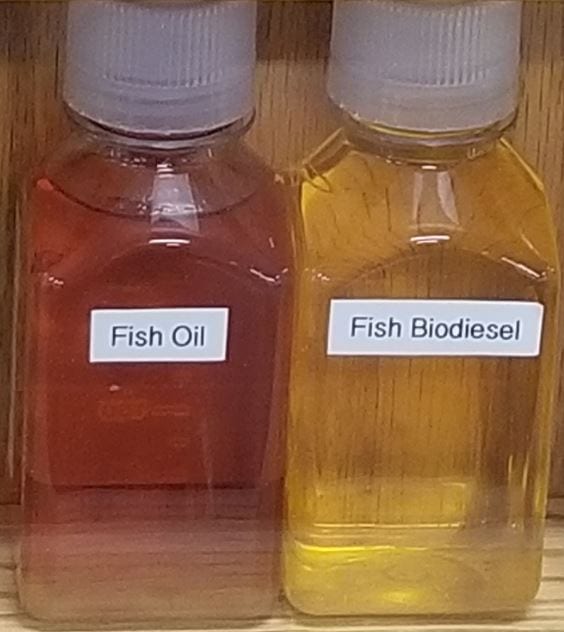
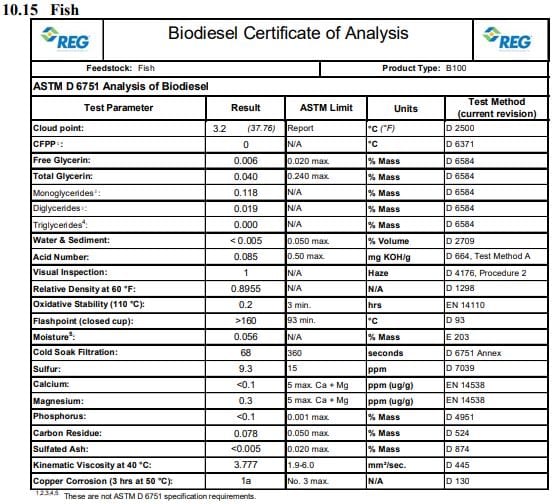
Last article for biodiesel feedstocks was Coconut Oil and Coffee Oil.

